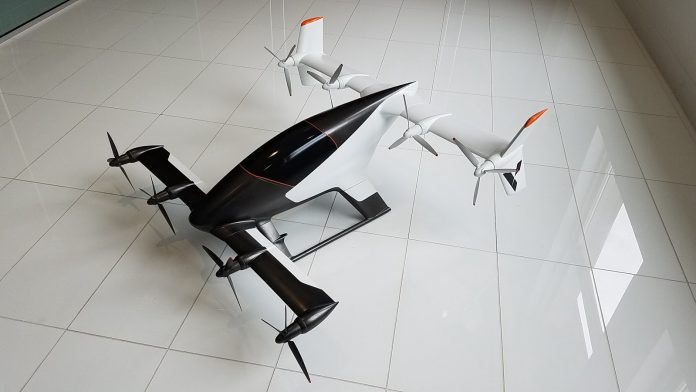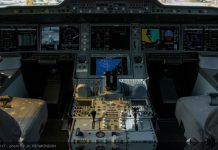Airbus will begin testing its Vahana personal electric aircraft in November, according to reports in technology publications.
Vahana is a tilt wing electric air vehicle developed by Airbus’s Silicon Valley subsidiary A3 (pronounced A cubed). Airbus says the eight engine short-range electric aircraft will ‘help usher in a future in which urban air mobility (UAM) transforms daily life for billions of people’.
The tests will be conducted at Eastern Oregon regional Airport, US, where A3 has a hangar.
Major full-scale components for Vahana have been produced, including wings, fuselage, avionics components and actuators, and A3 has ‘begun full-scale vehicle integration’ of these.
Wired reports the aircraft will fly and land autonomously using inertial reference, lidar and GPS.
A3 speaks of ‘a fleet of millions of Vahanas’ that could eliminate slow, congested ground-based commuting. ‘Even addressing a fraction of a percent of this market would result in the highest aircraft production rates in history — not to mention the time and energy it will save commuters,’ it says.
Flight Safety Australia’s September-October edition, published online next week, examines progress in electric aircraft and investigates whether these are the next stage of aviation’s evolution or a dead end with parallels to 1960s predictions of widespread supersonic travel.






No way would you get me in anything that doesn’t have a human pilot thank you very much all the same.
What a brilliant concept, I salute people that think outside the box.
For Paul Davies: to learn to fly a machine like the VAHANA without computer input would require skills few people have.
All too often computers DO make mistakes in conventional aircraft which only a well trained human pilot can interpret and fix.
Only a few days ago I read an article in this publication where a single engine Flying Doctor Service turboprop A/C being flown by two very experienced pilots suffered an issue where the recently installed electronics situation display installed in the panel malfunctioned and caused the aircraft to climb toward a stalling situation when apparently no such conditions existed to cause it to do so and only their experience and reference to the aircraft’s conventional instruments in the panel made them come to a decision where they ignored the faulty display and flew the A/C out of the problem.
The unit later was inspected and no problem could be found and the system has operated without any problems since.
Now if a similar problem occurred in one of these Tilt Rotor Taxis, what then Anthonie and would you like to be sitting in one of these contraptions if it were to happen?
With all due respect to the ever embattled professional pilots of the world, these pilotless aircraft will more than likely usher in an era of flight safety the likes of which we will never have seen. And investigating agencies will be denied the ever present get out of jail free excuse – pilot error! Assuming of course that there will be a need for an investigation.
So, what is proposed here is traffic congestion will be removed from the roads and directed up in the air.
Don’t want to imagine what airspace would be like with thousands of these things buzzing around in all different directions.
If mankind invent it then there will always be crashes/accidents, moreso with this type of contraption. Can’t see this happening anytime soon due one reason,INSURANCE!! People fly these days for two reasons, there’s no other fast way of getting there and cost, aviation as we know using autonamous machines is pie in the sky stuff for the masses!
I found an interesting infographics. It says that the serial model will appear by 2020. Source https://helicopterra.com/info/airbus-vahana/